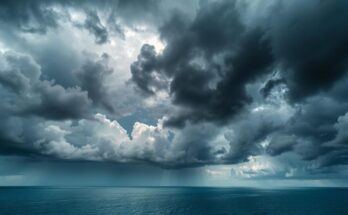Réunion Island set multiple world rainfall records during two storms: Cyclone Giselle in 1964, with up to 66.49 inches in 18.5 hours, and another significant soak in 2007, accumulating 194.33 inches over 96 hours. Its specific geographical features amplify rainfall amounts, making it a unique location for extreme weather events.
In the last week of February, Réunion Island, situated in the southern Indian Ocean, experienced remarkable rainfall from two distinct storms, setting several world records. The first storm occurred between February 28 and 29, 1964, when Category 1 Cyclone Giselle impacted the island. During this storm, the Belouve station recorded extraordinary rainfall amounts: 30.16 inches within 6 hours, 42.79 inches in 9 hours, 52.76 inches in 12 hours, and a staggering 66.49 inches in 18.5 hours. To put this into perspective, this amount is nearly equivalent to Miami’s annual precipitation of 67.41 inches in less than one day.
Another significant event took place this week 18 years ago, from February 24 to 27, 2007. The Cratère Commerson station on the island captured an astonishing 154.72 inches of rain over 72 hours, and 194.33 inches over 96 hours. Both records remain officially recognized by the World Meteorological Organization for their respective durations, highlighting Réunion’s propensity for extreme rainfall.
The unique geographic location of Réunion Island contributes to its high levels of rainfall. Situated within a corridor of South Indian Ocean tropical cyclones and characterized by its rugged terrain, including volcanic peaks that rise over 10,000 feet, the island experiences significant precipitation. Moisture-laden winds from slow-moving storms are forced upwards by the sharp elevations, intensifying rainfall incidents and resulting in record-setting amounts.
In conclusion, Réunion Island has recorded extraordinary rainfall levels that have set multiple world records, largely due to its geographical features and cyclone activity. The island’s unique terrain enhances the effects of moisture-laden winds from tropical storms, leading to unprecedented rainfall amounts. Both events from 1964 and 2007 illustrate the island’s capacity for extreme weather and highlight its significance in meteorological records.
Original Source: weather.com




